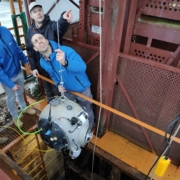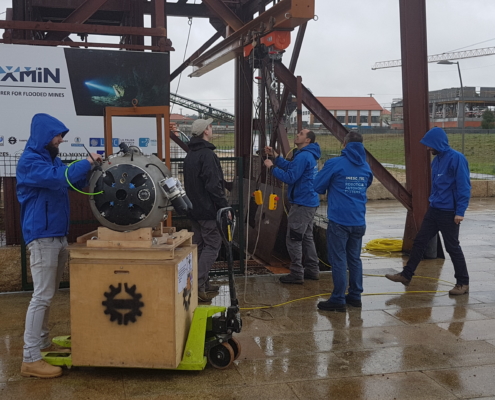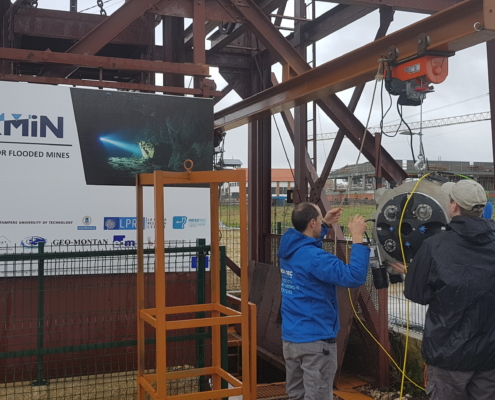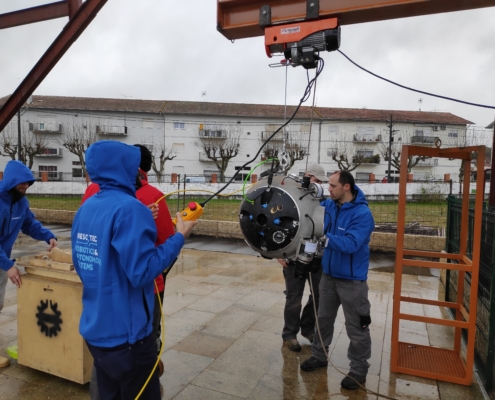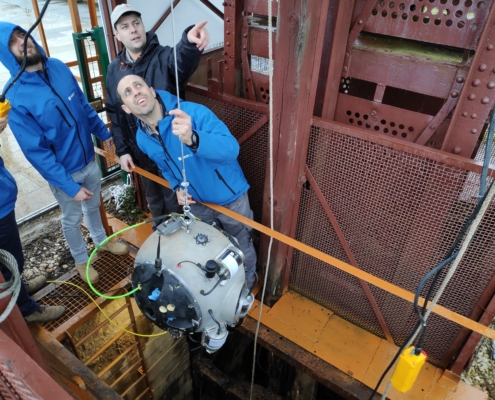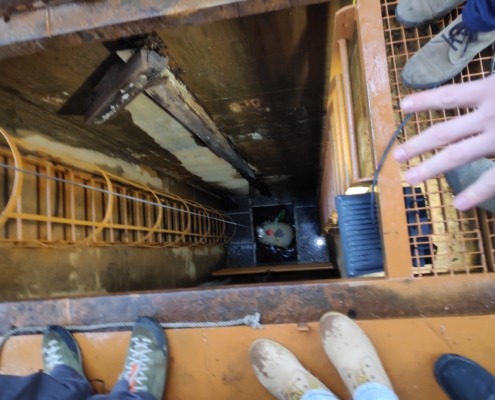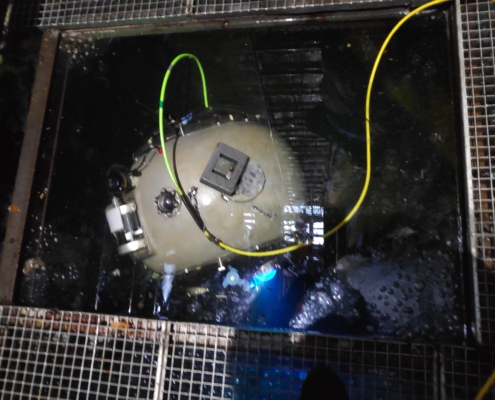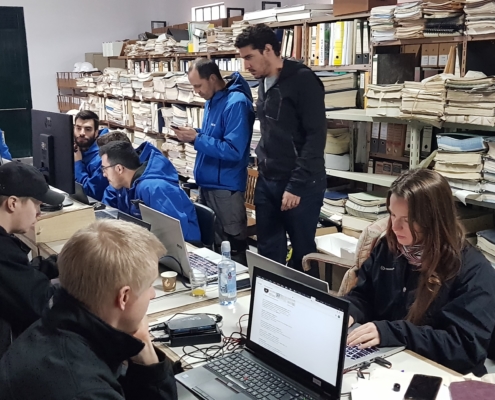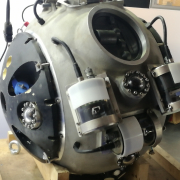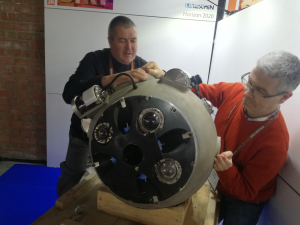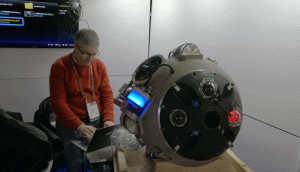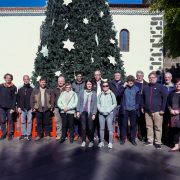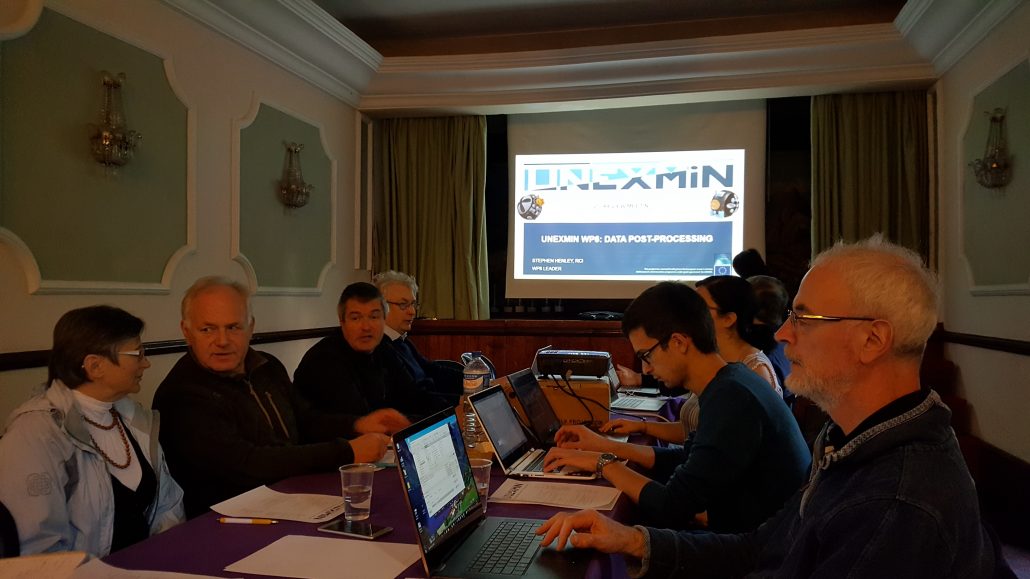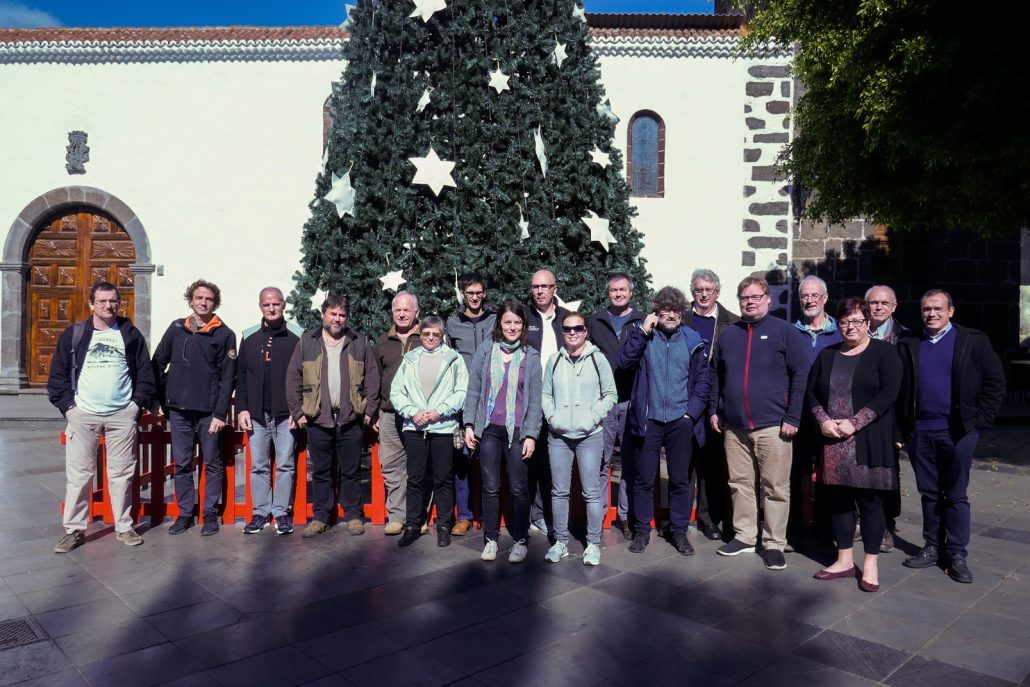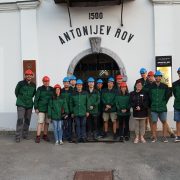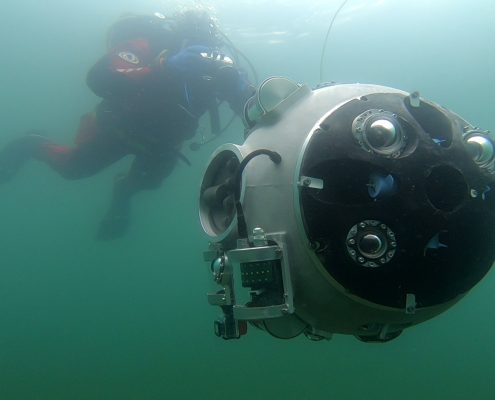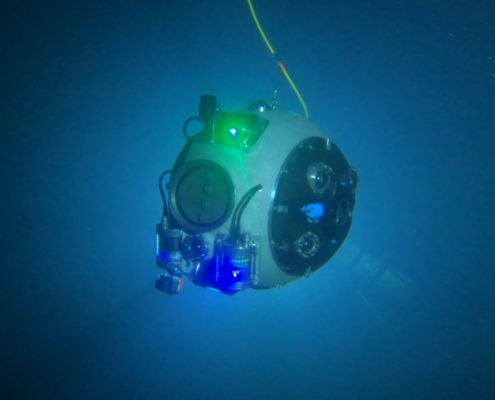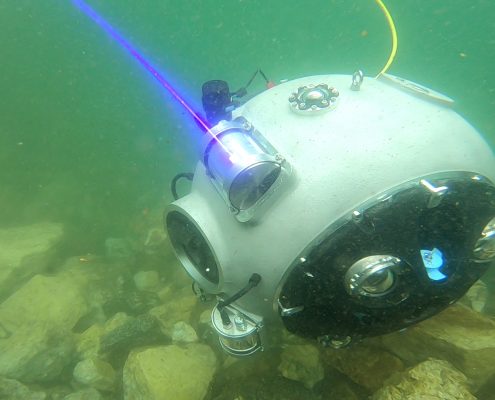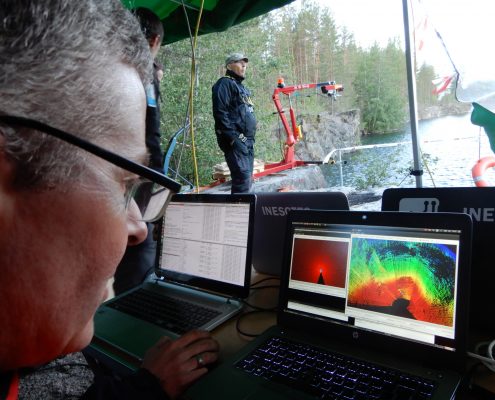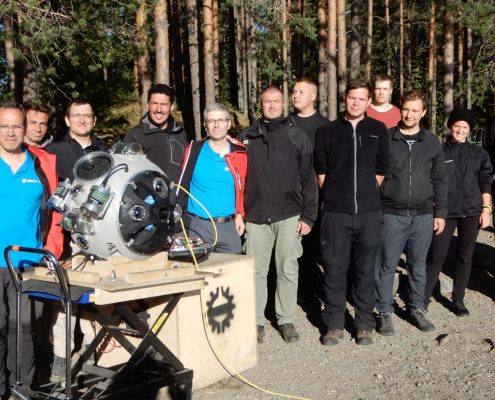The field trials at the Urgeiriça flooded mine, in Portugal, have finally started!
The third set of UNEXMIN’s field trials is now ongoing. After the two previous trials a lot of revisions and improvements were made to both the UX-1 robot both on hardware and soft aspects. The technical teams that operate the robotic system also gained important knowledge with the previous “experiments”. The second UX-1 robot is currently being assembled in INESC TEC’s laboratory, and both robots will take part in exploring and mapping the Urgeiriça mine flooded shafts from now until April.
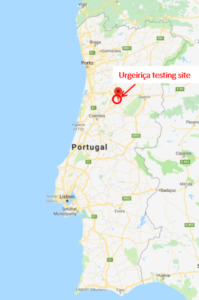
Brief description of the mine
The Urgeiriça Mine, located in the Viseu district, center of Portugal, was once considered one of the most important deposits in Europe due to the exploitation of its strategic commodities: radium (from 1913 until 1944) and uranium (from 1944 until 1991). In 1967 the mine reached the maximum depth of approximately 500 metres below ground The mine seized its operation in 1991.
Urgeiriça’s mission objectives are the following:
- Continue testing capabilities, autonomy and scientific instrument array of the prototype robot UX-1a in a uranium mine in Portugal under different challenging conditions
- Test the functionality of the second prototype UX-1b in a realistic mining environment.
- Trial simultaneous dives of both robot in a realistic mining environment
- Provide information on the status of the flooded mine infrastructure, i.e. main galleries and shafts
First images of the UNEXMIN team on the field:
Follow @UNEXMIN on our social media channels to keep up with the most recent news on the Urgeiriça field trials: Facebook, Twitter and LinkedIn.

